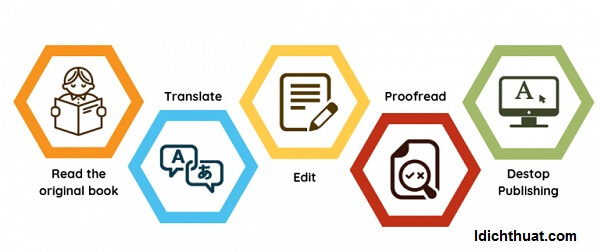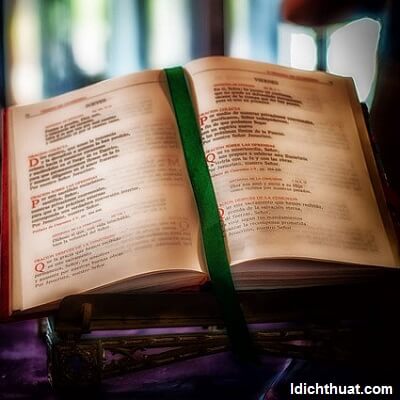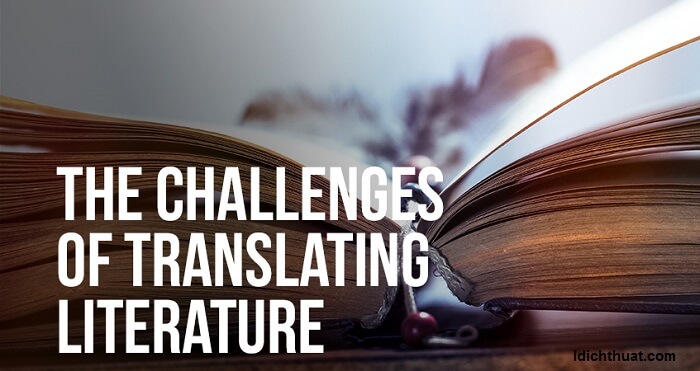Book localization, especially book translation is extremely important for an author to reach their audience from different parts of the world and it is considered as one of the difficult translation tasks. Best. Even the most experienced linguists make mistakes when translating books.
In today's post, we'll explore the challenges translators face when translating a book and how to overcome them.
Note: LEARNING TRANSLATION – BOOK TRANSLATION
Difficulties in Book Translation
Translated without changing the meaning of the author
Although specialized translation requires high accuracy and localization involves changes in layout, format, color, etc., to suit the culture and local people's thinking. To have a great translated book, translators need more than just excellent literary insights and subject matter expertise to ensure the accuracy of the knowledge writers want to share.
The translator also ensures that the translation process does not affect the author's expression and their unique writing style. That means word choices shouldn't be too literal or too exaggerated compared to the original book. They must be the perfect words to evoke understanding and emotions commensurate with the reader's self-perceived reading of the original. Believe me, it's not an easy task.
+ Note: Specialized document translation in English, Chinese, Japanese, Korean, French, German, and Russian
Culturally specific expression
Sometimes, the name of a famous person or character in a novel or poem is used as an adjective. Don Juan, for example, was a notorious fictional character in a play by Tirso de Molina in 1630. Don Juan was a wealthy liberal who devoted his life to seducing women.
As the character's popularity grew, Don Juan became a common expression for a woman. The question is when translating a book that mentions this character, should the translator keep the original name and add a footnote. Or should they find an equivalent fictional character in the target language's culture?
Play with words and flirt
The art of puns is not easy, when the translator needs to be able to accurately express it, entanglements are definitely a real headache for any translator. It requires more time to translate than anything else.
Like showing She sells seashells on the beach, or, You know New York, you need New York, you know you need a unique New York to name a few. Translators don't stop at finding an equivalent expression for sentences, they also find words that present the same pronunciation challenge to the reader in the art of puns.
Note: List 5 Most Common Mistakes When Finding Translation Services
Dialects and slang
The use of slang or dialect in fiction or poetry is not unfamiliar to readers, but it is also a challenge for translators. How can they translate these words into a new language while keeping the characters unique.
Gone with the Wind by Margaret Mitchell is a representative of this case. Most of the black people in the novel speak in a different dialect. Let's see how linguists deal with dialects.
Original:
“Is de gempmum gone? Huccome you din' ast dem ter stay fer supper, Miss Scarlett? Ah done tole Poke ter lay two extry plates fer dem.
Vietnamese translation:
“Are you guys back? Why not invite people to stay for a meal? I told Pok' to serve two more sets of plates.”
Note: Film; Video Clip; Subtitle; Voiceover Translation
Book Translation Process
An excellent, professional book translation requires the involvement of many experienced translators, who must put a great deal of time and effort into the translation. A clear workflow will be a great and indispensable assistant to ensure the quality of the book and meet the publisher's deadline. The process may vary depending on the translator's working style, but it still includes the following basic steps:
Read the original
This step can be considered the foundation of the entire translation project. Why? If the translator does not understand the content of the book, how can they convey the correct message of the book to the readers?
At this step, translators should read the original book (repeatedly) to get the idea, message and tone of the author's writing. But reading the original book is only the first preparation. Translators can use the next few days to read the author's previous books (to fully understand the author's literary style), research on related topics, or cultural references to be found. Mention in the book and discuss with native speakers the unclear points of the book if necessary. Only when the translator knows the book inside and out do they begin to translate it.
Translate and review the translation yourself
To avoid conflicts in literary style, only one translator should work on translating the book. Translators then continue to review the first translation themselves a few times until they are satisfied with the results.
Edit and proofread the translated version
Professional translators will be the next to review the entire translated book to correct possible mistakes, otherwise known as proofreading. Editors make wording changes or use language, sentence structure, inconsistencies, and terminology misuse.
Repeat
Unlike the editor who reads and compares the target with the source text, the third-party linguist only reads the final translated version to ensure smoothness and visuals of the book. Proofreading focuses on spelling and punctuality, grammatical errors, typographical errors, consistent language, and the general format of the translation.
Desktop Publishing (DTP)
After proofreading and refining, the book is presented and indexed in an appropriate format. It is reviewed (reviewed in context) before being printed and published.
Note: Multilingual Translation Service
Tips for professional book translators
Never forget to learn about the author
More than anyone, the author is the person who creates and understands the book the most. So, book translators need to research the author as a good reference for your book. Ask them about all the styles and meanings the author is preoccupied with, or talk to them about the inspiration for the book and the characters. Any information will help you in the translation process.
Of course, this communication is not all. The author has, in many cases, passed away or cannot be contacted directly. However, you can still read up and refer to the author's other novels or some old interviews the author did about the book. It is worth noting that the translated book must convey the voice and tone of the author, so their involvement will be important.
Do not start translating until the translator is confident in their knowledge of the book
As we have mentioned, if the translator does not understand and convey the correct meaning, they cannot expect the reader to have the right perception of the book. So make sure you know all aspects of the book before translating it.
A bilingual translator is not enough for literary translations
Being a native is not equally good at writing and using words. In fact, only a handful of indigenous linguists are qualified to translate literature. The translator should be a writer, a blogger or someone who loves to play with words and languages.
Always follow the strict translation process
Follow a rigorous workflow to ensure the progress and quality of your translated book. You should also consider working on CAT tools and using other proofing tools for accurate translations.
Read, read and read
Even if you are in the process of translating, do not stop reading related books and topics to expand your vocabulary and knowledge that directly affect your translated book. Furthermore, reading can spark your inspiration and take your project to the next level.
Posts Advantages and disadvantages of book translation Perhaps I have already shared with you about one aspect of the translation profession, right? With company Idichthuat catch translation experience The best and the best in the industry.
For more information engraving service policy recruiting translation collaborators or discuss about self-taught translation you can press contact Idichthuat.

Nguyen Trung Khang - Talented interpreter and translator, passionate about translation
Nguyen Trung Khang is a talented interpreter and translator, with many years of experience in the field of translation and linguistics. He graduated from Ho Chi Minh City University of Education, majoring in Linguistics in 2015.
After graduating, Mr. Khang participated in a professional interpretation and interpretation training course at the University of Foreign Languages - Hanoi National University. He achieved a high-level certificate in interpreting and interpreting, and was also awarded a master's degree in linguistics.





